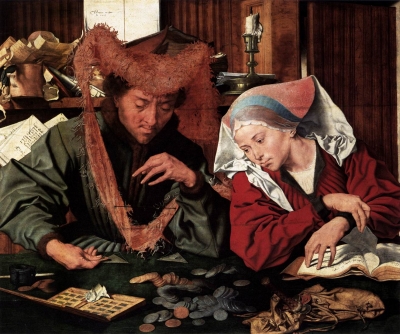 The international definition given for hawala is this – money transfer without money movement.
The international definition given for hawala is this – money transfer without money movement.
Suppose you live abroad, and want to send money to your relative here in India. The proper way is to transfer the money through banks, or other authorized financial  institutions. But they will exchange your dollar for rupees only at a rate fixed by the government. You may lose a lot of money there. Besides, the institution will charge an extra amount for delivery and service.
institutions. But they will exchange your dollar for rupees only at a rate fixed by the government. You may lose a lot of money there. Besides, the institution will charge an extra amount for delivery and service.
In such cases, some people prefer to take a bigger risk. They approach a hawala broker, who will help transfer this money without much expense. They just have to be given some commission, which is low compared to legal methods. Also, it requires no paper work.


 It is a system that works purely on trust. You will not get a receipt for the transaction, and any loss that occurs will be solely yours. Unlike a proper bank transfer, hawala brokers contact their counterparts in India or any country to which the money has to be transferred. The counterparts then deliver the amount to the concerned person. Hence, it is said that there is no actual movement of money. This is a crime in any country.
It is a system that works purely on trust. You will not get a receipt for the transaction, and any loss that occurs will be solely yours. Unlike a proper bank transfer, hawala brokers contact their counterparts in India or any country to which the money has to be transferred. The counterparts then deliver the amount to the concerned person. Hence, it is said that there is no actual movement of money. This is a crime in any country.

 Considered as one of the earliest mass forms of coinage, silver currencies of varied shapes and sizes have been used for more than 1000 years.
Considered as one of the earliest mass forms of coinage, silver currencies of varied shapes and sizes have been used for more than 1000 years. It is believed that coins came into use during the 7th century BC. Coins appeared in different forms in different parts of the world, and it is quite difficult to trace their origins.
It is believed that coins came into use during the 7th century BC. Coins appeared in different forms in different parts of the world, and it is quite difficult to trace their origins. History reveals that the money we see today has appeared in differing forms before- as cattle, as salt, as tea, as tobacco etc. But none of these lasted very long. Over a period of time, the need to develop currencies that were handy and long lasting arose. This led to the birth of metals as money.
History reveals that the money we see today has appeared in differing forms before- as cattle, as salt, as tea, as tobacco etc. But none of these lasted very long. Over a period of time, the need to develop currencies that were handy and long lasting arose. This led to the birth of metals as money. Giro was a mode of banking first used by Egyptians in the 4th century BC. The idea behind the system was to transfer money from one person to another. State granary units acted as banks then, and accepted ‘giro’ payments.
Giro was a mode of banking first used by Egyptians in the 4th century BC. The idea behind the system was to transfer money from one person to another. State granary units acted as banks then, and accepted ‘giro’ payments. At a time when a tiny card can facilitate payments of all kind, it might seem strange that centuries ago, people used ‘tea’ as a mode of payment. But yes, some actually did!
At a time when a tiny card can facilitate payments of all kind, it might seem strange that centuries ago, people used ‘tea’ as a mode of payment. But yes, some actually did!

 No diet can be complete without a pinch of salt. Not only does this mineral make our food tasty, but it also helps in preserving them. A healthy person should have an adequate amount of salt in his body to avoid many diseases.
No diet can be complete without a pinch of salt. Not only does this mineral make our food tasty, but it also helps in preserving them. A healthy person should have an adequate amount of salt in his body to avoid many diseases.